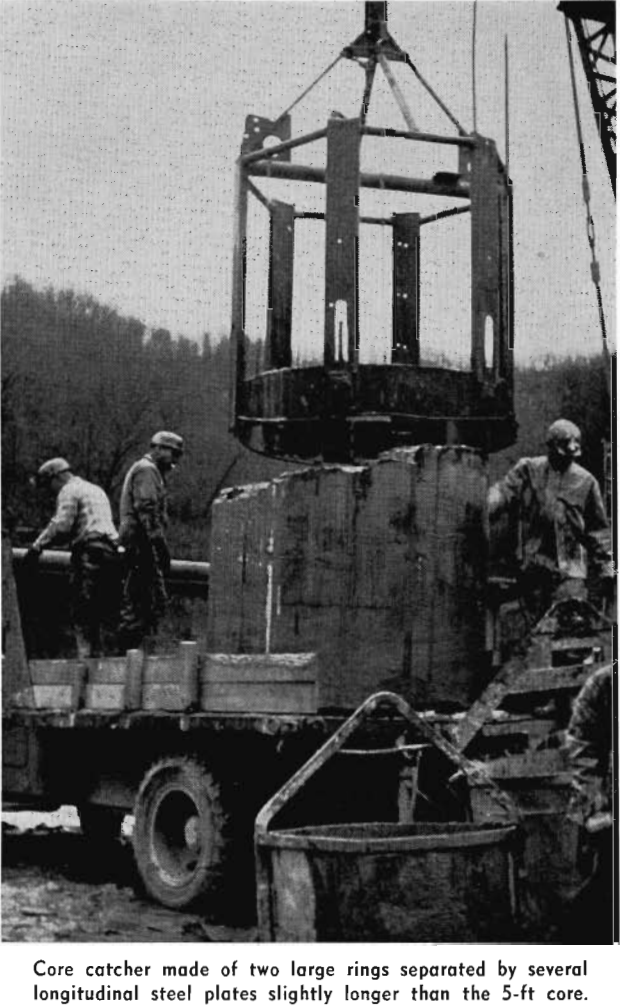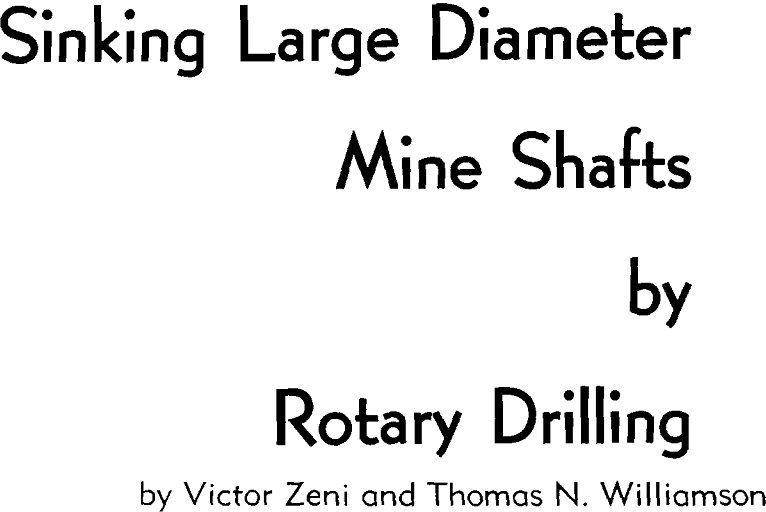A 6-ft diam core drilling machine has successfully completed seven mine shafts in Virginia and West Virginia to depths as great as 465 ft. There is no practical depth limitation to this new system—a potential method in formations not easily penetrated with other large-scale drilling programs—and higher penetration rates and larger diameters are possible in some formations already being drilled successfully by other methods.
This method of rock drilling was being accepted by the mining industry for blastholes in diameters from 4¼ to 12¼ in. The possibilities of coring or of drilling all of the bottom of the hole were both considered. Removal of the vast amount of cuttings, the need for tremendous thrust on the bit, and other considerations made it desirable to core. Special cutters would be required, since none were available to roll in these very large diameters or to cut a practical kerf width.
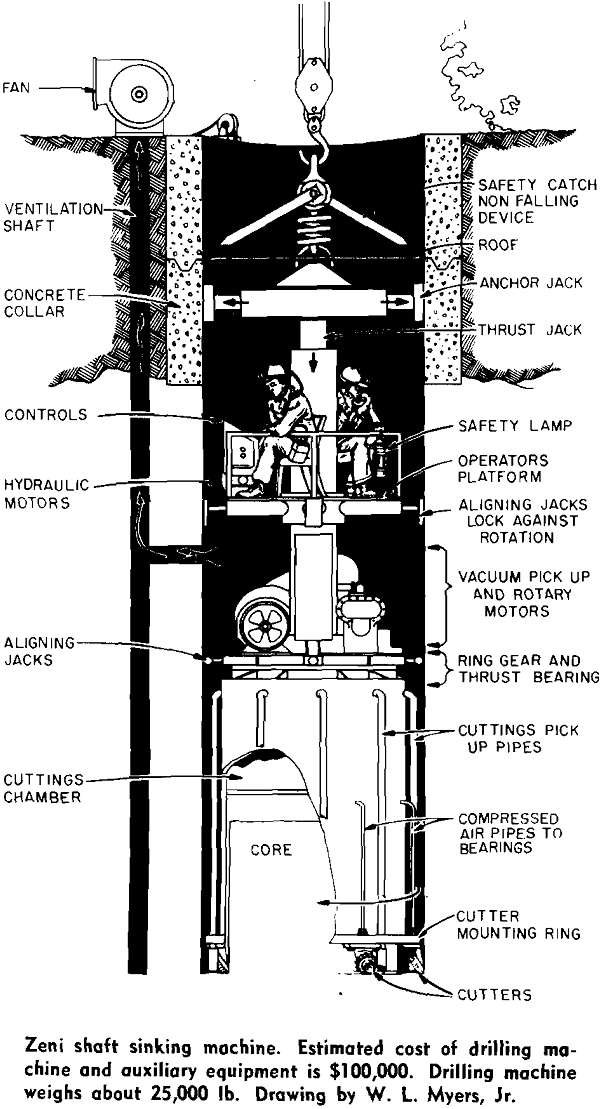
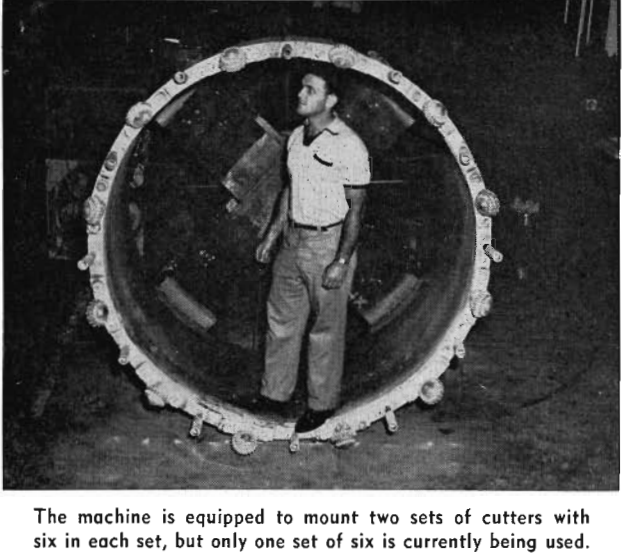
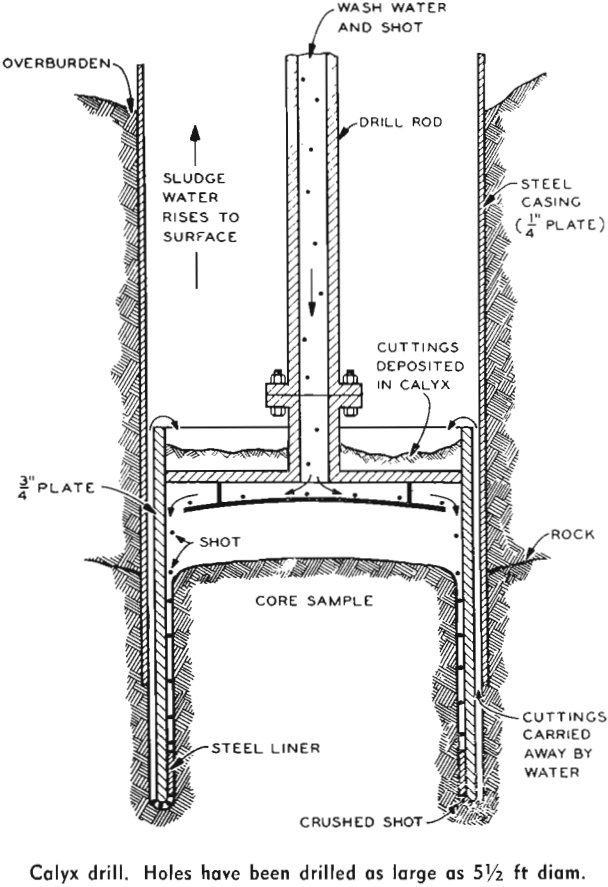
Cutter Development: After determining that a kerf 4 in. wide would be practical, Hughes Tool Co. engineers designed a cutter to roll in a 75-in. diam hole. This particular design will work satisfactorily in any diameter from 5 to 8 ft. Mounted on a conventional bit bearing of the tri-cone type, the cutters are bolted to a ring on the lower end of the core barrel. The angle of the bearing pin is such that as the bearing wears the cutter is forced out, compensating for gage wear. There has been no serious difficulty in getting back to bottom with a new set of cutters because of an undersize hole.
The operator’s platform, on which all controls are located, was placed just above the midpoint of the mechanism above the core barrel. Small mechanical screw jacks were installed horizontally at the top of the core barrel and at the operating platform level to assist in maintaining a straight hole and to help prevent rotation of that part of the machine above the core barrel. Owing to the plumb bob action of the machine these screw jacks have not often been needed for directing the hole.
The machine is equipped to mount two sets of cutters with six in each set, but only one set of six is currently being used. Six cutters provide a sufficiently smooth operation and a higher unit loading on each cutter with the thrust available. Use of fewer than six cutters at one time is not recommended, as three of the six cut the inside half of the 4-in. kerf and three cut the outside. Each of the three cutters in each path has different numbers of teeth so that any rock gear formed by one cutter is broken up by the others.
Starting the Hole: In starting a new hole, surface excavation is done by clamshell or other conventional means through the soft surface to bed rock or to a depth of about 30 ft, whichever is less. A 6-ft ID precast concrete shaft collar is inserted in this excavation. This heavily reinforced precast concrete pipe is in easily handled lengths which interlock.
Five to 10 shifts are required to move in the setup and tear-down equipment for each shaft.
Operation: In drilling, the anchor and thrust jacks are set, the vacuum motor is turned on, and the core barrel is rotated. Telephone communication is maintained between the hoist men and the machine operator, and drilling times, hydraulic pressures, and other operating conditions are recorded at 2-in. intervals. This telephone report not only provides an excellent log of operations but also gives constant contact between surface and machine for safety.
